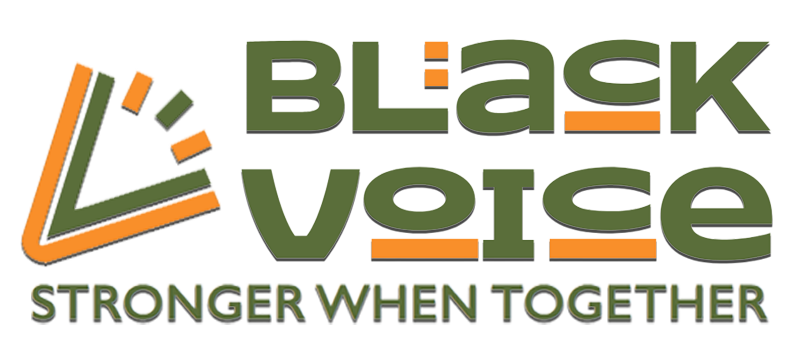By Alexandra Yeboah
Posted on September 24, 2021
Emotional abuse may be non-physical, but the absence of physical marks or evidence doesn’t make it any less real. According to the Department of Justice, “emotional abuse happens when a person uses words or actions to control, frighten, or isolate someone or take away their self-respect.”

While emotional abuse is a form of workplace harassment that can affect almost anyone, some are more vulnerable than others. Research from the Employment and Social Development Canada found that people of colour are more likely to experience workplace harassment than any other group. Those who suffer harassment on the job may end up dealing with anxiety and chronic depression, post-traumatic stress disorder, and other serious health problems further down the road. Workplaces, where emotional abuse is present, could face issues in employee turnover, low worker productivity, and overall workplace disharmony.
If you think you might be facing emotional abuse from a boss or supervisor, we have listed some ways that you can identify it in the workplace.
Micro-managing
Do you feel like your boss or co-worker watches your every move like a hawk? Are you afraid of making even one mistake for fear of harsh reprisal? Your boss’s tendency to overshadow you at work is called micro-managing. It is a tactic often used to intimidate an employee and cause them to be overly nervous or anxious. You can typically expect to see this sort of abusive behaviour from those in high-ranking positions who lack trust in their employees.
Distrust/suspicion
If you are constantly second-guessing yourself and the choices you make because of your boss’s distrust in you, you may be a victim of emotional manipulation. Due to your abuser’s heightened suspicion of you, they may refrain from assigning you responsibility or delegating important work tasks to you. They may even originate accusations about you with little or no evidence to support their claims.
Undermining or taking credit for your work
A healthy workplace thrives when every employee feels free to contribute their ideas with the expectation that they will be acknowledged. But an abusive boss or co-worker will use their position of authority to take credit for someone else’s hard work. Another way that they might try to assert control is by deliberately hindering your progress on work assignments or setting up nearly impossible expectations. An employee who has been abused in this way will end up further demotivated and less likely to participate fully in future work projects.
Verbal aggression
Emotional abusers get a rise out of using their words to deliberately hurt other people. They exhibit their anger or aggression by delivering curse words, insults, threats, criticisms, raising their voice and otherwise lashing out at the intended recipient. A Black woman in the workplace may find herself subject to gendered and racialized microaggressions that may be difficult to pinpoint at times because they can be very subtle. An abuser might carry out microaggressions by making assumptions about a worker based on their race, subscribing to racist or sexist jesting and humour, using harmful stereotypical language, commenting about a Black woman’s professional appearance (i.e. attacks on cultural clothing or hairstyles, etc.), or sabotaging their opportunities for success within the organization.
Playing on your insecurities
Abusive bosses or co-workers will prey on your insecurities and otherwise do anything to make you feel small or unimportant. When things go wrong in their life, the abuser will put you at fault and deny any part they had to play in it. This tactic is meant to gradually wear down your self-esteem. The more repetitive their demeaning statements, the more you will begin to believe them and may find yourself accepting some or all of the blame. The abuser may even go as far as to elicit others in the workplace to join in on their abuse, by spreading untrue rumours or gossip.

Gaslighting and manipulation
Gaslighting is a form of emotional abuse meant to manipulate someone and force them to question their present reality. If you bring up a past incident or work complaint to a boss or supervisor and they make you feel crazy for bringing it up in the first place, this is ‘gaslighting.’ It is a toxic strategy meant to silence you and make you doubt your own feelings and experiences.
Minimizing or denying their act
When an abuser is confronted, they will fail to hold themselves accountable. They may end up just making light of their abusive actions to minimize the negative impact. Another way they seek to deny the severity of the abuse is by flipping the script to make the victim appear to be the one with the problem. Minimization does more harm than good as it ascribes guilt where it doesn’t belong and conveniently keeps the abuser out of the picture.
Isolation/excluding you from work events
Abusive bosses will isolate the abused by preventing them from seeking help from others. They may even exclude them from social events and team-building activities involving other co-workers. The abuser might give their target the cold shoulder or leave them out of significant conversations and work-related planning events. In meetings, they might further disrespect their target by interrupting them when they are talking and making them feel as if their ideas do not matter. All of these are examples of how the abuser determines to work against the abused and intentionally dismiss their presence in the workplace.
Responding to emotional abuse
According to The Ontario Human Rights Code, every worker has the right to experience a work environment free from any form of discrimination or harassment. Here are some ways you can respond to the abuse you are facing in the workplace:
- Confront the abuser – Request a one-on-one meeting where you can confront the abuser in a professional setting. Clearly communicate the problems you are having with your abuser and ensure to establish boundaries. If after this direct approach, you find that they respond in an unfavourable way or the bullying persists, seek out help from senior management or Human Resources.
- Keep a written record that distinctly details the incidents of the abuse that have occurred. Note down specific information in your account, including when and where you were harassed, what was said and done, who said or did it, the names of any witnesses, and the steps you took to address the problem.
- Report the incident(s) – Talk to your supervisor or a representative from Human Resources and ask for their help in stopping the abuse. If you are in a union, you may contact them. Also, familiarize yourself with your organization’s workplace harassment policy and review the options provided, which should include steps on how to file an internal complaint.
- Report a complaint with the Ministry of Labour – Your employer must deal with workplace harassment as is made clear by Ontario’s Occupational Health and Safety Act (OHSA). If you recognize that your employer has failed to take the necessary action to ensure an appropriate investigation has been conducted, the next step you can take is to report a complaint to the Ministry of Labour.
- Educate yourself by signing up for courses such as Sensitivity Training Canada’s “Workplace Anti-Bullying/Harassment” Workshop that can provide further context on how to deal with situations where harassment and bullying have occurred.

